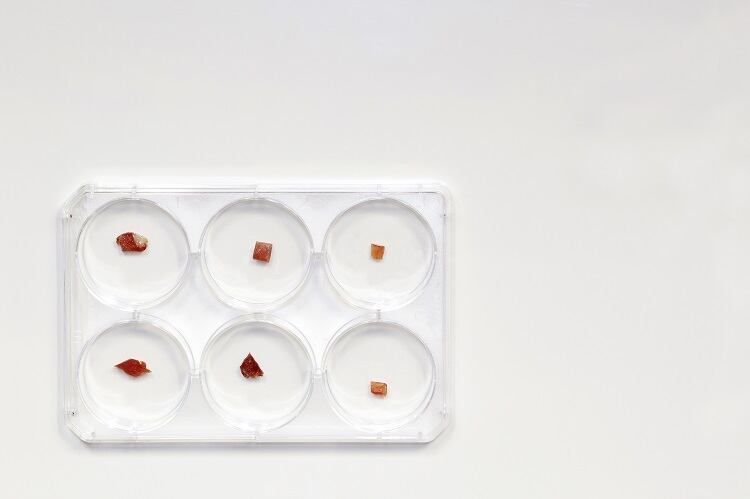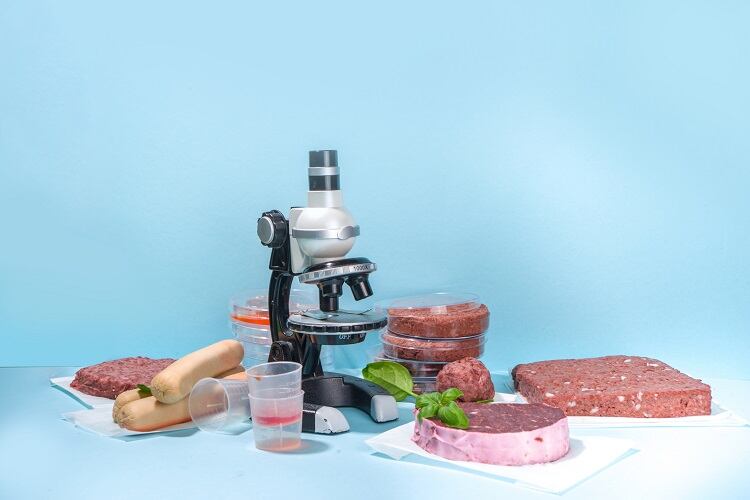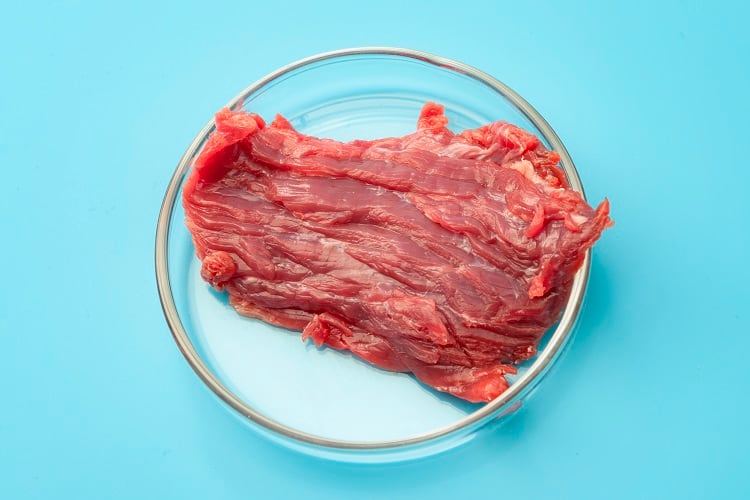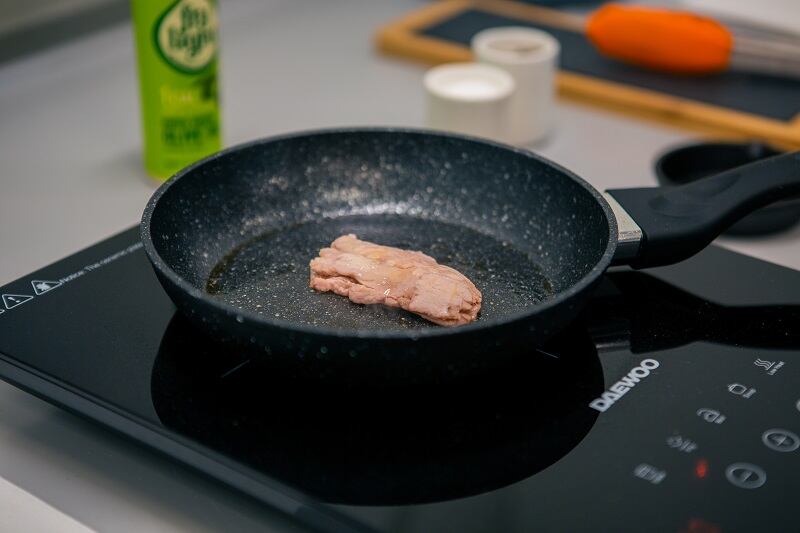Singapore is something of a trailblazer in the world of cultivated meat, having been the first country to market the product back in late 2020. Since then, the Singapore Food Agency (SFA) has also granted regulatory approval for the use of serum-free media in the production of cultivated meat. Both approvals were awarded to Eat Just, Inc.’s GOOD Meat.
The US – where Eat Just is headquartered – is also making headway in progressing cultivated meat products to market. Late last year, Berkeley-based UPSIDE Foods received the greenlight from the Food and Drug Administration (FDA) marking the successful completion of its pre-market safety review.
In ‘Dissecting cultivated meat regulation part 1’, we looked at the challenges and opportunities that exist in the European Union and Israel’s regulatory processes for cultivated meat. Now, we’re putting the regulatory processes of Singapore and the US under the microscope: What about these countries’ frameworks is so attractive to cultivated meat players? And can any improvements be made?
‘Nimble’ Singapore has done an ‘exemplary’ job
Singapore has proved itself a trailblazer across the global cell-based meat regulatory landscape, with Eat Just’s cultivated chicken bites approved for sale in 2020, and multiple chicken-based products – including a whole chicken breast – in 2021. The same company had its serum-free media approved in Singapore last month.
“The Singapore Food Authority (SFA) has done an exemplary job,” according to Ambika Hiranandani, a legal, policy and partnerships advisor to alternative protein companies and Good Food Institute (GFI) alumni. The SFA has demonstrated transparency in publishing its Standard Operating Procedures (SOPs) online alongside a list of tests cultivated meat companies must conduct prior to submission.
Singapore has also developed a Novel Food Safety Expert Working Group made up of food safety experts, scientists, public policy experts, lawyers, medical practitioners, and others, which helps the SFA ascertain whether potential food safety issues have been addressed.
The entire process takes anywhere between nine to 12 months, explained Hiranandani. But even before the entire application is submitted, cultivated meat companies can consult with the regulatory authority. This system, which facilitates open dialogue between regulators and companies, is ‘probably the most effective and efficient’ in the world, said Hiranandani.
And importantly, as has been done by Israel, the Government has one single point of contact for the reception of for novel foods dossiers. Putting one person in charge of handling the file simplifies the process, suggested the GFI alumni.
According to Madeline Cohen, senior regulatory attorney at GFI, the SFA’s continual updating of guidance for food safety assessments has proved ‘very helpful’ for businesses. “When companies are looking to get a product approved, these changes communicate the agency’s most recent thinking and it’s available at their fingertips.”
Other geographies, such as the EU, take ‘much longer’ to publish anything regulatory, including guidance, we were told. “But SFA is nimble and they’re able to keep updating their guidance on a regular basis, which is very helpful for companies.”
US demonstrates transparency and welcomes consultation
In the US, no cultivated meat products are currently on the market. UPSIDE Foods, which recently completely its pre-market safety review for a cultivated chicken product, must obtain a grant of inspection from the US Department of Agriculture (USDA) for its facility in Emeryvillle, CA, as well as a mark of inspection and label approval before entering the market. It’s likely UPSIDE Foods’ first products will be commercialised later this year.
“It was really great to see the FDA provide a lot of information on how exactly UPSIDE completed its evaluation process,” GFI’s Cohen told this publication. This is thanks to a new repository set up on the FDA’s website which provides information, including the dossier, that companies submit for their cultivated meat products.
In response to the UPSIDE Foods evaluation, the FDA published a scientific memorandum detailing the evaluation process together with an infographic illustrating each step in the process that was evaluated, Cohen explained. “That provides a lot of information to other companies looking to start this process.”
The FDA – unlike in other geographies, suggested the attorney – also welcomed companies to consult with them early on in the process. “The pre-market consultation process took just over a year, and that did include some back-and-forth between the two. So that’s a pretty efficient process for a novel food.”

The FDA is not solely responsible for regulatory approval, however. In the US, authority is split between the FDA and the USDA Food and Inspection Service (FSIS). “This fits well within the roles these agencies already have,” Cohen told FoodNavigator.
The FDA regulates cell collection, banking, and cultivation for all species, an area in which the agency has expertise because of its work in biotech and pharmaceuticals. The FDA will also oversee the processing, packing, and labelling of cultivated seafood and game meat.
As to overseeing the processing, packaging and labelling of cultivated terrestrial meat, poultry and catfish, the USDA takes the reigns. This makes sense, explained Cohen, because these products are ‘essentially biologically the same’ as their conventional counterparts. “The USDA is going to be inspecting these facilities at the same rate as they inspect conventional meat processing facilities. These facilities will need the same type of grant of inspection that conventional meat processing facilities need from the USDA.”
What about labelling and nomenclature?
What remains to be seen in the US is regulation addressing the labelling and nomenclature of cultivated meat products. The USDA will have the labelling jurisdiction over its products – including cultivated meat and poultry – while the FDA will have jurisdiction over the labelling of cultivated seafood products (with the exception of cell-based catfish…if ever developed).
Both agencies have collected comments from stakeholders, but neither has published guidance or regulations concerning how such products should be named or labelled. If labels require USDA approval before such regulations are passed, they will need to be approved on a case-by-case basis. “That could potentially be how we learn, for the first time, what the USDA is thinking on nomenclature and labelling,” said Cohen.
From GFI’s perspective, if the cultivated meat product in question comes from chicken cells, it should use the word ‘chicken’. The same goes for other species of animals. “How else would consumers know that [the chicken product is made from] chicken cells? And that if you’re allergic to chicken, that you cannot consume this product?” GFI is advocating for terms that are ‘neutral’ and descriptive’, we were told, such as ‘cultivated’ – rather than a term that ‘might be more disparaging, like lab-grown’.

Other recommendations include increased government funding across the board, including in the US, we were told. “In the US, and globally, it’s just not possible to scale the way we currently produce protein. So we’re not going to meet growing demand and feed 10bn people by 2050.
“We really need new ways of producing these products. We have the technology, but it’s going to take significant government investment to scale it so that it can actually meet its promise.”
Will progress in Singapore and the US influence Europe?
With the US, Singapore, and Israel working through – or having completed – novel foods dossier submissions, will other regions be concerned about being left behind? Could the EU, for example, be encouraged to speed up its regulatory process?
GFI’s Cohen does believe the US pre-market approval for UPSIDE Foods last November could inspire other regulators. “We’ve heard here and there that regulators in some countries have been waiting to see what the US does before putting a framework in place themselves.
“I’m hoping that having this process completed once in the US will inspire regulators elsewhere to put together a transparent framework in their country. Clarity is important for companies because this is a new space.”
Now that the US is on its way to being the second country to put cultivated meat on people’s plates, economic competition might soon come into play. The US is a big market, and Cohen suspects it might prompt Europe and others to ‘move a bit faster’ with their regulatory processes.
‘Dissecting cultivated meat regulation part 1’, covering the challenges and opportunities that exist in Israel and EU’s regulatory frameworks for cultivated meat, can be read here.




